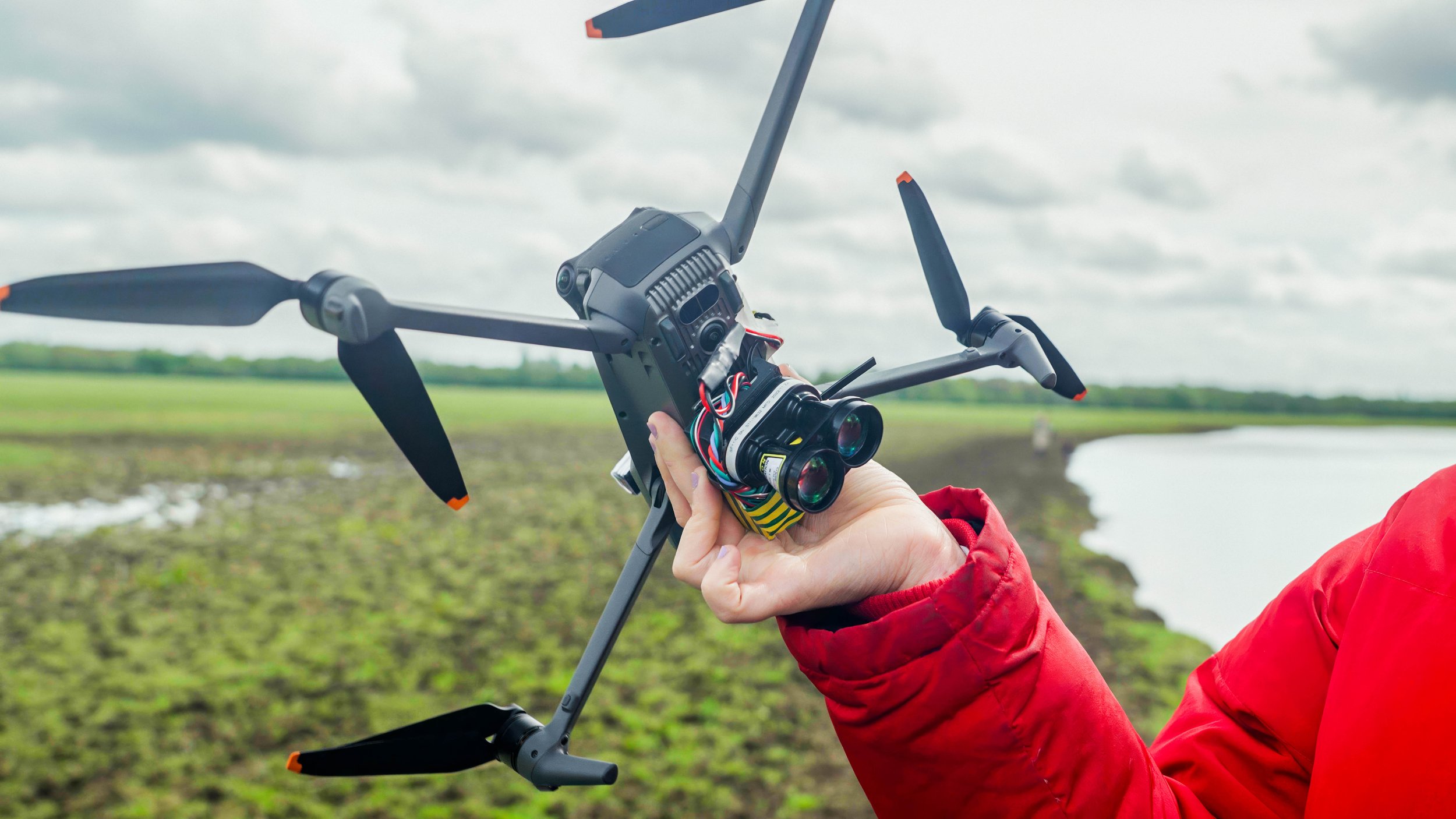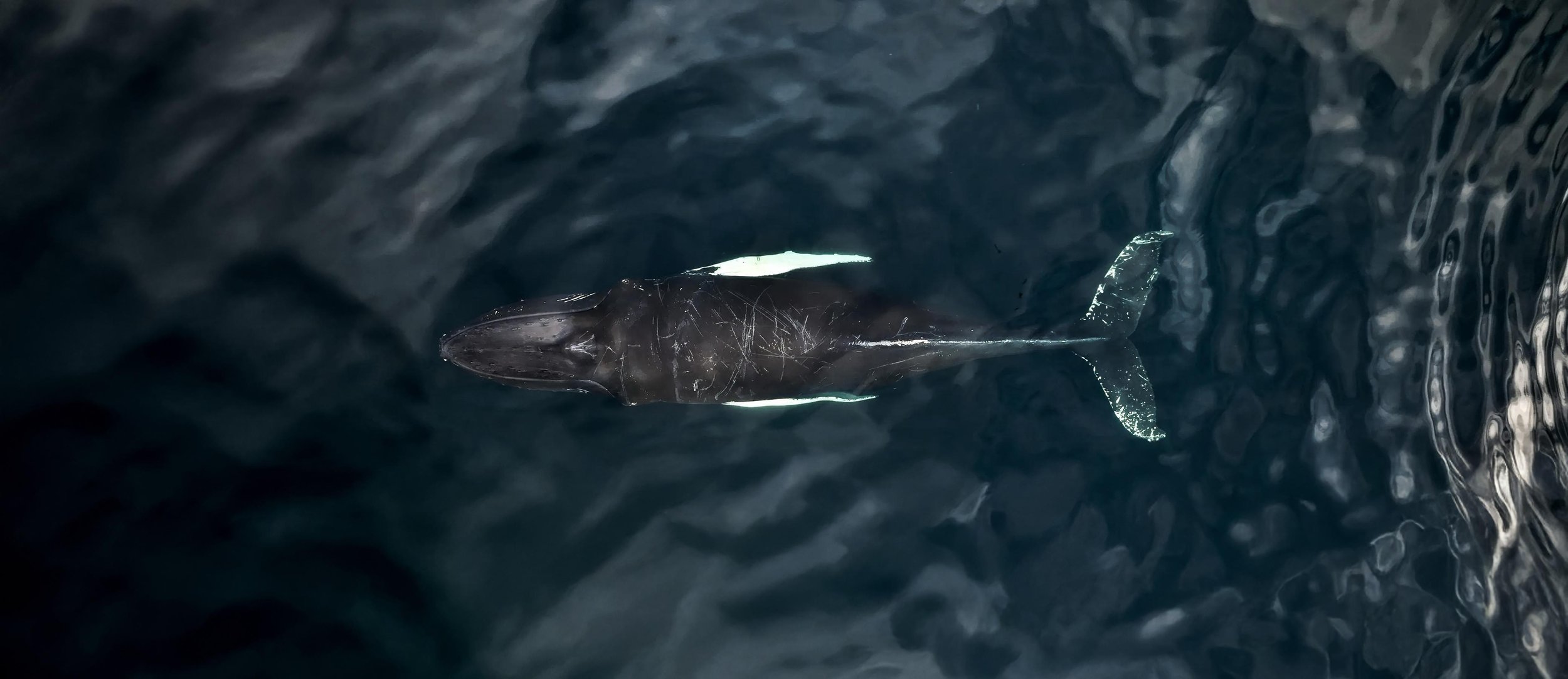
WHASER.
A better tool to help measure whales.
Designed and built by Tandem Ventures, in collaboration with the charity Whale Wise.
Enabled by our wonderful partners

Watch the film:
Fishing gear entanglement is a major threat to humpback whales.
Image: Whale Wise
Lines and nets can entrap whales, restricting movement and preventing essential activities like feeding. This often leads to death by drowning or starvation.
Survivors endure prolonged suffering, sometimes remaining entangled for years, with scars serving as stark reminders of their ordeal.
↓
We met with Jess Ward from the charity Whale Wise.
Jess informed us how they’d been assessing the long term impacts of entanglement on humpback whales in Iceland.
A key part of the research involves measuring the whales to assess their health.
This is done by attaching a LiDAR range-finding unit to a drone, and flying it over the whales.
By combining this data with the drone’s photos, the whale can be scaled and measured.
The LiDAR unit accurately determines the drone’s height above a whale.

We spent a day with Jess to see their current equipment in action.
We sent out Sam on a paddleboard to simulate a whale, and Jess flew the drone and LiDAR unit over him.
By combining the LiDAR data with the drone’s photos, Jess was able to measure the whale (or in this case, the humpback Rogers).
However, the equipment had loads of problems.
Loose wiring, susceptible to damage from the drone’s propellors
Inaccessible SD card
Lack of feedback (GPS, data-writing, battery level, etc.)
Difficulty landing or catching the system, due to the fragility of the LiDAR
So, we decided to design a new LiDAR system for Whale Wise and other research organisations worldwide.
↓
We began by rebuilding the electronics systems from scratch.
We found newer, smaller versions of some of the components and programmed the system into an ESP32 Nano microcontroller.
We designed a custom PCB to house all of the components in a compact manner, reducing the weight and amount of wiring.
We then built and tested various physical prototypes, exploring approaches for an easy-to-use tool.
We combined the merits of each concept with the new electronics into a fully functional prototype, and headed to the north of Iceland to put it to the test.

After finding Jess and the rest of Whale Wise, we revealed the prototype.
Key aspects of the prototype
Detachable, secure handle.
Landing legs (disguised as fins), allowing the device to be landed on the ground.
Recessed LiDAR to protect it during landings.
OLED screen with an ‘All systems go!’ check, with information on the GPS status, battery level, SD card, and a live readout from the LiDAR.
Locking mechanism to attach it to the drone, even while wearing gloves.
USB-C charging, with an integrated battery.
We flew the prototype over a humpback whale.
The data was verified at Whale Wise’s coastal base - the whale was a known individual to the charity, corroborating our new data.
With the final learnings from the Icelandic deployment, we refined the concept into a final, fully productised design.
↓

Even smaller, lighter, better than the prototype.
By making the device as small and light as possible, the flight time of the drone is improved.
Thin walls, compact electronics arrangement, and removing unnecessary material all help optimise the design.






























